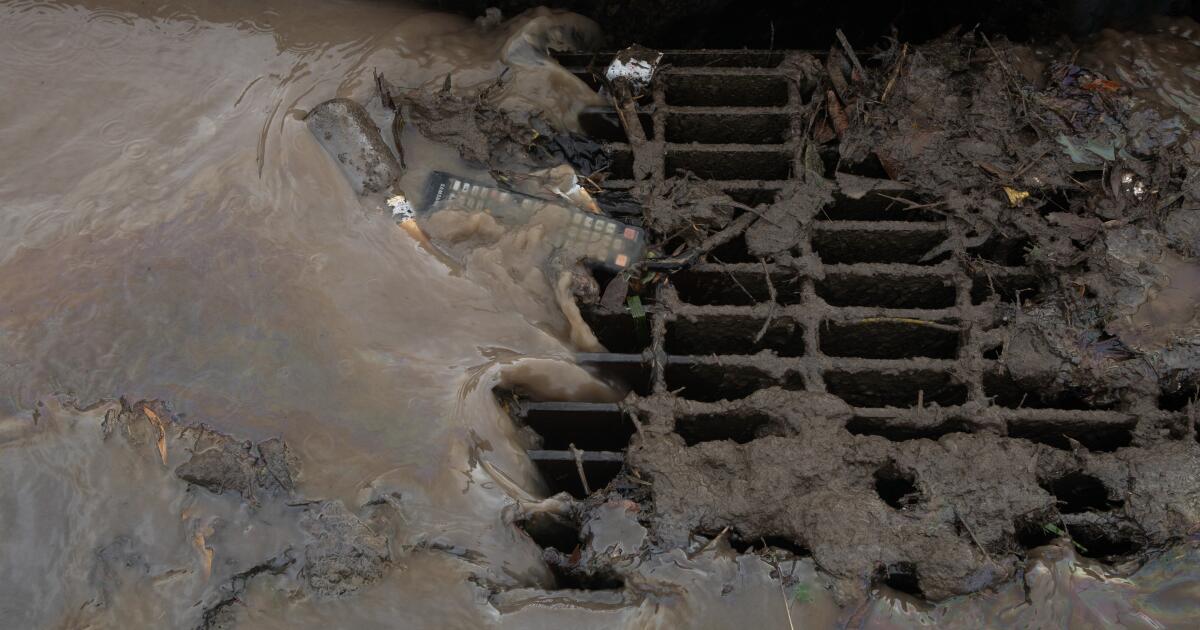

Floods like the one that submerged much of San Diego County Monday push urban waterways beyond their banks, carrying a melange of potentially harmful bacteria such as E.coli and salmonella into nearby neighborhoods.
From the border to North County, the inches of rain that fell in just a few hours not only shut down roads and even freeways, but also filled residential homes with enough water that, in some cases, boats were necessary to pull people, some of them stranded on roofs of homes or cars, to safety.
Having what’s usually confined to riverbeds and creeks suddenly on one’s property only adds to the damage that the water itself does when it soaks hidden spaces inside wall cavities, providing the perfect conditions for mold to grow.
It is just the recipe for public health problems, and local officials say they are doing what they can to spot flood-related infections early.
Dr. Wilma Wooten, San Diego County’s public health officer, said Friday that regular analysis of patients seen in local emergency departments has not so far detected increases in symptoms such as diahrrea, which would signal a bloom of flood-associated illness. But it’s early.
“Looking at the last three days, what we’re seeing in the (emergency departments) isn’t higher than what’s normally presenting this time of the year,” Wooten said.
The incubation period for salmonella, Wooten noted, is 12 to 72 hours, meaning that anyone who swallowed tainted flood water on Monday or Tuesday should have started to show symptoms already. E.coli, the other pathogen of significant concern, has a three- to five-day incubation period, meaning any cases associated with flood water might start to appear as the weekend arrives.
But the danger of suffering health consequences after a severe flood, explained Naresh Kumar, an environmental health scientist at the University of Miami, only increases as recovery efforts continue.
“When the water is running, the level of bacteria will be relatively low, but the problem happens with standing water,” Kumar said. “The flood water, it doesn’t just contain bacteria, but also lots of other nutrients too, and those nutrients are food for the bacteria to grow once the water is still.”
For this reason, he said, the danger of wading through a flooded home a day or two after a flood can be significantly less than it is a week later.
The need to wear tall boots, gloves and masks increases the further in time one gets from the storm.
Kumar, who has a research grant from the National Institute of Environmental Health Sciences to study the health effects of Hurricane Ian, which struck Florida in 2022, added that the mold clock is also ticking post-flood.
Research, he said, shows that temperature plays a significant role in how long it will take for mold to start growing on sodden building materials.
“If the temperature outside is 70 degrees or so, it generally doesn’t take more than seven days before mold begins to grow in the walls or on any furniture or clothes or drywall that was exposed to water,” Kumar said.
It is best, he added, to open walls and start as much ventilation as possible inside flooded structures, though it can be hazardous to continue living inside dwellings that are taking a long time to dry.
The health consequences of flood, then, tend to fall hardest on those with the fewest resources, individuals and families who can’t afford to hire remediation companies to do the work quickly and safely with the promise of an eventual insurance payout.
There is a tragic recent example of what can happen when a person with a chronic health condition has no option but to continue living in a home when mold starts to grow.
Florida mourned the death of 26-year-old Christian Childers who died in January 2023 after his asthma was worsened by continuing to live inside a home choked with mold following Hurricane Ian.
“Many people who are unable to evacuate and who are renting homes, generally landlords take care of themselves first,” Kumar said.
Could more be done by local government to help those of more modest means escape homes at an elevated risk of developing mold?
“Those discussions are being held as we speak,” Wooten said. “Hopefully, we will be hearing more about those types of efforts at upcoming board meetings, but I don’t have anything specific to share at this time.”
The county did announce this week that it will take a more active role in helping individuals recover from flood damage.
An assistance center announced this week is set to open Sunday, and county road crews, which already have been working through the week to help homeowners remove flood debris from their properties, are due to be supplemented by hired contractors on Monday.
Residents who need assistance with flood related recovery can call 2-1-1.





